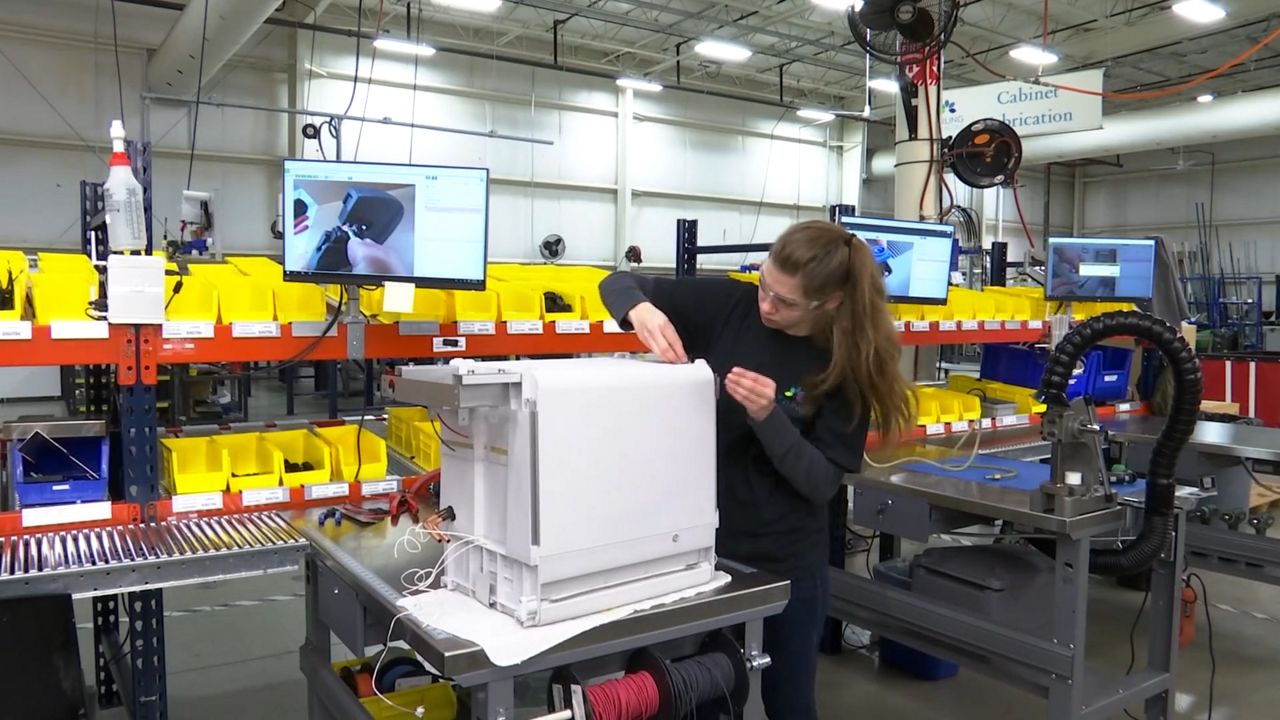NORTHEAST OH -- Ohio Oil and Gas Association spokesperson Mike Chadsey says he remembers when the downturn in the natural gas industry hit, it was Thanksgiving 2014.
“OPEC met, and when you say OPEC, you really mean Saudi Arabia. They realized they were losing market share to American shale producers so they turned on the taps, flooded the markets and depressed the price. And we sat on a very long downturn, probably in 15 and 16 and into 17. Now we're coming out of that,” says Chadsey.
- 60,000 Active oil & gas wells
- Ohio is 5th in the nation in natural gas production
- Ohio natural gas production has grown every quarter since 2013
According to the Ohio Department of Natural Resources, Ohio Natural gas production has grown every quarter since 2013.
Our state currently has over 60-thousand active oil and gas wells.
And there are currently more than 2-thousand Utica shale wells in production and 18 active drill rigs.
Ohio is number five in the nation in natural gas production and ranked as the 12th oil producing state in the country.
According to a recent report by the Ohio Department of Job and Family Services, shale related jobs have increased over the past seven years, nearing 200,000 employees.
And since 2011, the shale industry has invested more than $60-billion dollars in our state.
“We are seeing more rigs move into town. We're seeing those rigs being more efficient. More effective, drilling faster, better wells. And the trend is still to the south in those hot areas. So that I believe has lived up to the hype. Particularly that's where you're seeing a lot of the assignment with the processing plants like Markwest. The possible ethane crack plant in Belmont County. So that's really the heart of the play, is in Appalachia,” says Chadsey.
Chadsey admits there have been some recent challenges with injection wells in Mahoning and Trumbull County.
An injection well in Weathersfield Township was closed down four years ago after being linked to almost a dozen earthquakes between 2011 and 2014.
“Two, two-point-five. We had 11 earthquakes before the four-point-0. And you can study all the ones in Oklahoma, it's the same exact pattern,” says Anderson.
Despite that fact, Chadsey says ODNR continues to do its part.
“Monitoring the volumes that are coming in from out of state, monitoring the volumes that are being injected. The rates that are being injected. The depths that are being injected,” says Chadsey.
While both sides may agree to disagree...the open dialog will continue.
“We can have that sophisticated, intelligent, adult conversation about this industry. But at the end of the day i'll point to the fact that they'll get into their cars and drive home, and that's powered by crude oil and they will get in their home and like a day like today they'll turn their furnace on and that's powered by natural gas. There is a lot involved with oil and gas that is in their lives,” says Chadsey.









